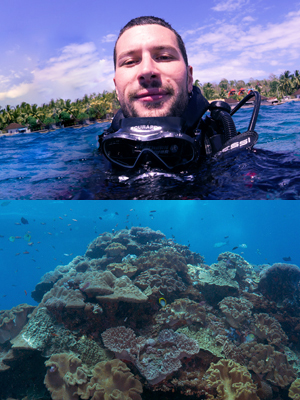Your support
Philanthropic support received by the Native Australian Animal Trust goes towards our students and researchers, with the first awards made in 2018 to the recipients profiled here. If you would like to give to the Native Australian Animals Trust, you can do so via the button below, or find out more about giving. Your support will help to make possible more projects such as these.

Emily Roycroft: Cryptic species in the delicate mouse
Undefined species are problematic for conservation assessment, as species cannot be protected if they are not identified and classified. Preliminary data from across the range of the broadly distributed native Australian delicate mouse (Pseudomys delicatulus) has indicated the presence of three separate species. Using a combined genomic and morphological approach, this project aims to assess species boundaries and test for hybrids across the delicate mouse range. Characterising the pattern of genetic divergence in the delicate mouse will help inform conservation action, and add to our understanding of how past environmental change has driven the diversification of native species in Australia.

Liz Milla: Evolution and ecology of Australian Heliozelidae moths
Heliozelidae are a family of very small, day-flying moths, with many previously unknown species recently discovered in Australia. One group of Australian Heliozelidae are the exclusive pollinators of some Boronia plants. The female moths pollinate the Boronia flowers, and the caterpillars feed on some of the developing seeds. This is known as an obligate pollination mutualism, a rare and very specialised type of plant-insect relationship. With support from the Michael Mavrogordato Award, I will be able to classify these small moths using their DNA sequences, helping us understand how many different species are involved in this pollination mutualism, and how it may have evolved.

Francesco Ricci: Physicochemical micro-niches in coral skeletons
Many microorganisms live in association with reef corals, playing important roles for their hosts and within the reef ecosystem. So far, little attention has been given to microbes living inside the skeleton and its micro-niches. Hence, my PhD project in the context of the skeleton will describe the microbial communities and determine its physicochemical properties in Porites and Goniastrea species, allowing to comprehend the relations between microbes and physicochemical gradients.

Christopher Jolly: Are species reintroductions inherently dangerous?
Most reintroductions of native animals to the wild fail. There are a lot of context-specific reasons why they fail – but could it be that simply the movement of animals into an area they’re unfamiliar with is just inherently dangerous? In this study, we plan to test this question at Arid Recovery by moving cat-smart endangered burrowing bettongs and cat-smart, invasive European rabbits to a new area where feral cats are present. We will compare the movement and survival of moved animals to those of bettongs and rabbits that already living in this cat-invaded landscape.

Ashley Dungan: Introducing climate resilience in corals
In the past two years, 50% of the living coral on the Great Barrier Reef has died. The cause is thermal stress, which results in a phenomenon called coral bleaching. My project investigates the production of beneficial chemicals, called antioxidants, by bacteria that live with corals to protect them from thermal stress. Corals are colonised by billions of bacteria that have a profound influence on their health. I hypothesize that we can adjust the coral’s bacterial communities by increasing the number of antioxidant-producing bacteria and protect corals from bleaching. The outcome of this project will be the development of a probiotic derived from naturally existing bacteria that increases climate resilience in corals.

Edward Tsyrlin: DNA barcoding of sand flies (Ceratopogonidae, Diptera) in Victoria
Despite being an import indicator of River Health around the world, species of sand flies (Ceratopogonidae) are still poorly known in Victoria. One of the main aims of my PhD research is to conduct taxonomic studies to describe and spate common species of this group within the Greater Melbourne area. I will be using DNA barcoding and morphological features to separate these species and to associate larvae and adults. These findings provide a basis for detecting sand fly species from water and sediment using environmental DNA, and pave the way for efficient biomonitoring of our freshwater ecosystems.